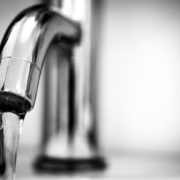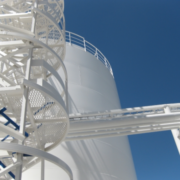Why should you soften water?
The answer to this question is very simple: To save money, effort and time! Hard water causes some household problems. Are you already annoyed by constantly calcified kettles, annoying cleaning and a bland coffee taste? If hard water enters your home through the water pipe, in the worst case it can even clog pipes and break heating elements. Hard water can as well Skin problems cause or worsen, become a problem for pets, or clog your plants. Especially in households with Children the water quality plays a major role. The little ones’ bodies cannot cope with pollutants so well and are therefore particularly sensitive.
Softening water can help. Due to the effects of lime, an ÖNORM even requires around 20 percent of Austrian households to soften. This applies to everyone whose water has a degree of hardness of over 18 ° dH (German hardness). But even if the water is less hard, softening it can make sense. With soft water, there are far fewer costs for repairs and cleaning of devices. Only small amounts of detergent are required for washing and cleaning. Even if a water softener is not cheap, the costs pay off quickly.
How does water get hard in the first place?
In the household, hard water is a problem especially where it is heated. The lime precipitates from 60 degrees Celsius. This means that it separates from the water and settles on surfaces. So arise Calcified kettle , Flakes on the tea, or stubborn deposits. The lime also remains when it evaporates. Stained shower walls and marks on sinks are the best examples of this.
Water is made hard by the minerals that are dissolved in it. The so-called total hardness is made up of calcium and magnesium. These minerals come from calcareous rock in our water. If rainwater flows through the layers of the earth, it is enriched with minerals – the groundwater becomes calcareous. Of course, not all water is equally hard, a distinction is made between different degrees of water hardness.
Read more: How water hardness develops and affects it
When should you soften water?
There is no general answer to that. Some people will not find a medium water hardness disturbing, others will. As a first clue, we have already given you 18 ° dH above. From this water hardness onwards, the ÖNORM will request softening. It is best to first find out your own degree of water hardness, classify it accordingly and decide for yourself whether you want to test a water softener. If you have any doubts, it is best to seek advice from a specialist.
Read more: What does the water hardness level say?
What is the point of softening?
If you decide on a softening technology, a lot changes. Softened water feels noticeably softer. Lime gives the water taste, but if the tea tastes like chalk, you can no longer argue about good taste. Soft water dissolves soap and detergents better. This means that you can significantly reduce your detergent consumption and get by with less when washing your hands or washing dishes. Softening can prevent or significantly reduce unsightly limescale deposits. This makes cleaning the bathroom and kitchen a lot easier.
Read more: The different water softening systems in comparison
Softening cannot be done with one Filter process be equated. By definition, only the hardness components calcium and magnesium are removed or changed during softening. In filter processes, these two minerals also disappear from the water, but usually some other substances with them.
It is important not to overdo it when softening. The pH value is also related to the calcium content in the water. If you remove lime, the pH value automatically drops. Water thus becomes an acid to a slight extent. If water with a pH value that is too low is pumped through pipes, it attacks them and can dissolve substances that are hazardous to health. This is not only problematic for the pipes themselves, it can even contaminate your water again. For Drinking water is therefore in the Food book of the Federal Ministry of Health requires a minimum hardness of 8.4 degrees German hardness.
How is water softened?
You can change the hardness of the water in various ways. In principle, there is the option of removing calcium and magnesium from the water or changing the structure of the lime.
Chemical variants
The most popular and widespread variant of chemical softening is the Ion exchanger . Perhaps you already have one at home – these devices are built into dishwashers as standard. In ion exchangers there is a container with synthetic resin that is loaded with table salt. If water flows through, the exchange takes place. Calcium is taken from the water and bound in the synthetic resin, but sodium gets into the water. Sodium is fundamentally vital for the human body, but in our modern society we already ingest far too much of it through our food. The ion exchange process is costly because the device requires frequent maintenance. The process also produces a lot of wastewater.
Read more: Sodium instead of lime – this is how the ion exchange process works
Another method is to soften water by adding a chemical solution. Understandably, this is not suitable for drinking water. Such chemical softeners can already be found in most laundry detergents so that they can develop their cleaning effect better. We also offer our own softeners for washing machines, for example.
Read more: Are water softeners useful in washing machines?
Physical variants
The lime undergoes a structural change in devices Permanent magnets or electric fields . These change the lime so that it can no longer form solid deposits. This reduces limescale deposits. Since calcium and magnesium remain in the water, the good taste is not lost. New limescale deposits can be wiped off a blackboard as easily as chalk dust. The disadvantage of these devices is that the effect only lasts for a certain time. If water stands for 48 hours – for example in the coffee machine – deposits can first form again.
Read more: Magnetic calcium conversion: a tried and tested method for better water
It is more in the technical area distillation to use. Water is boiled and the rising steam is cooled. The resulting condensation is free of any foreign matter, so it only consists of H2O. You may remember the chemistry teacher’s warnings from school that drinking distilled water ruptures cells and can be fatal. This effect is controversial. Some people even swear by the health benefits of distilled water and don’t drink anything else. However, experts warn that it is essential to add minerals to distilled water before drinking it. This method is very time-consuming and involves extremely high energy consumption.
A similar “empty” water as in the distillation is obtained with Reverse osmosis . In principle, this is a filter process. The water is pushed through a semi-permeable membrane only with the line pressure. Since water molecules are smaller than minerals and pollutants, only pure water remains after the membrane. The problem with this method is that the filtered out substances have to be rinsed out again. For one liter of osmosis water you have to calculate four liters of wastewater. This water is also primarily used in the technical field. Before drinking, experts say you should fortify it with minerals.
Read more: Reverse osmosis – no chance for foreign matter
Can you soften water without chemicals and salt?
The answer is yes! As you can see, there are some physical water softening systems that work entirely without chemicals and salt. Those who want to soften in an environmentally conscious way will find gentle and sustainable options here. When choosing a water softener, you should always think about your own consumption and what exactly you need the lime-free water for. Depending on how much water you soften, more or less wastewater comes together. The maintenance intervals also depend on the amount of softened water.
What options are there to soften water in the rented apartment?
Many water softeners are primarily aimed at homeowners. If you live in a rented apartment, you cannot normally install a device on the main water pipe and must first clarify any changes with the landlord. That is why there are small devices that you either attach directly to the tap or have as filter jugs on the dining table. Such softeners are also ideal for trying out, or if you do not want to soften the water in the entire household. In our water shop you will find a selection of renowned products that cover all needs.
[image_full_width key=”ad”]




